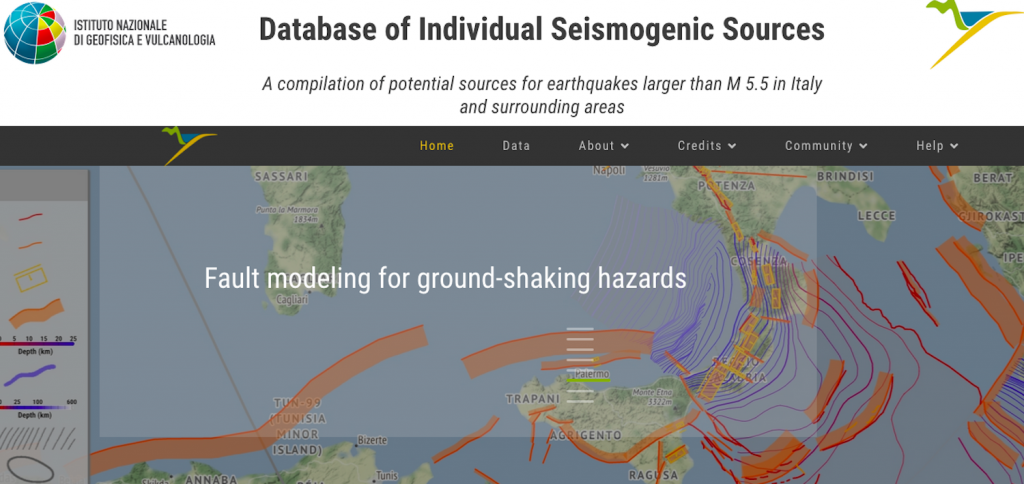
The website of the Database of Individual Seismogenic Sources (DISS) is now online with a completely new look and new features. The DISS is a database of seismogenic faults, i.e. potentially capable of generating earthquakes, identified to date in Italy through historical, geological and geophysical studies.
With its multiple navigation tools, the DISS, created by a team of researchers at the National Institute of Geophysics and Volcanology (INGV), provides a 3D representation of the seismogenic faults that have caused or could cause earthquakes in Italy. It is also possible to browse through the extensive documentation that accompanies the sources, assessing the seismic hazard at the regional and national scales.
Specifically, it is possible to consult “individual seismogenic sources”, representing the faults that have caused strong earthquakes in the past; “composite seismogenic sources”, i.e. simplified representations of extended fault systems that may contain some individual sources; and “subduction zones”, offering a simplified structure of these prominent geodynamic elements. It is also possible to observe the “debated seismogenic sources”, i.e. active faults that some of the scientific literature has proposed as potential seismogenic sources, which are not yet sufficiently known.
The new version of the website is intended to provide an innovative investigation tool for researchers and professionals involved in designing infrastructures of various kinds, as well as for technicians and institutional decision makers responsible for risk prevention and management.
Source: INGV

